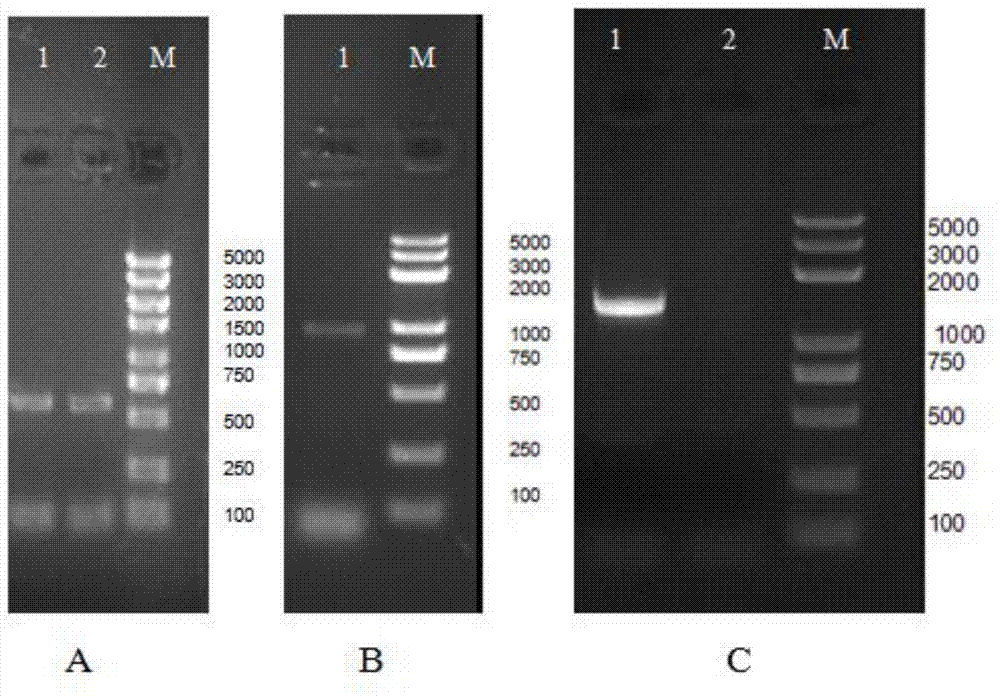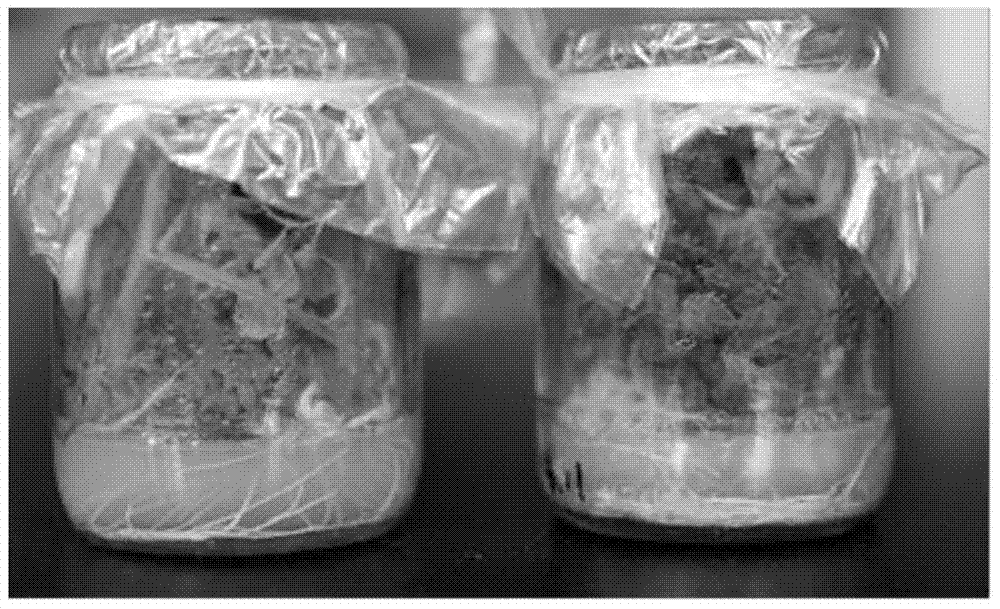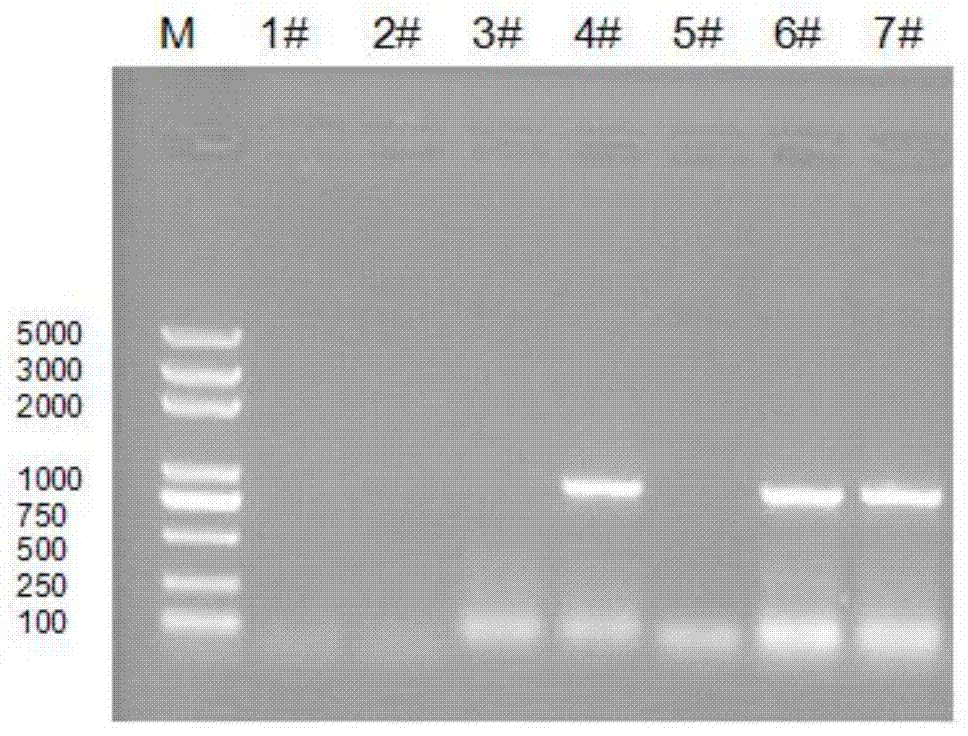Method for cultivating long-storage tomato plants by virtue of silent tomato gene SlNZG
A tomato and plant technology, applied in botany equipment and methods, genetic engineering, plant genetic improvement, etc., can solve the problems of tomato rot and waste, and achieve the effects of long cycle, good market application prospects, economic value, and high cost
- Summary
- Abstract
- Description
- Claims
- Application Information
AI Technical Summary
Problems solved by technology
Method used
Image
Examples
Embodiment 1
[0026] Embodiment 1, clone tomato gene SlNZG core fragment
[0027] Design specific primers (NZGi-F and NZGi-R) according to the sequence of tomato gene SlNZG (AK327648) and add an enzyme cleavage site at the 5' end, the sequence of which is as follows:
[0028] NZGi-F: 5'-cggggtacc atcgat cactttcgtctcgcgacata-3' (SEQ ID NO.1), the underline is the Cla I restriction site, and the bold is the Kpn I restriction site;
[0029] NZGi-R: 5'-ccg ctcgag tctagaacttctcatccaatggaccac-3' (SEQ ID NO.2), the underline is the Xba I restriction site;
[0030] The total RNA of tomato was extracted, and the total RNA was used as the template. According to the instructions of the RNA PCR Kit (AMV) Ver.3.0, oligodT was used as the primer to reverse-transcribe and synthesize cDNA. -R is a specific primer for PCR amplification. The PCR amplification program is 94°C pre-denaturation for 5min; 94°C denaturation for 30s; 56°C annealing for 30s; The PCR amplification products were identified by a...
Embodiment 2
[0031] Embodiment 2, the construction of SlNZG silencing vector
[0032] The pMD18-SlNZG vector was double digested with Cla I and Xba I, and then connected with the pHANNIBAL vector that had undergone the same double digestion to the PHANNIBAL vector containing the CaMV35S promoter and terminator to obtain the forward recombinant plasmid pHANNIBAL::SlNZG; The pMD18-SlNZG vector was double digested with Kpn I and Xho I, and then ligated with the recombinant plasmid that had undergone the same double digestion to obtain the RNAi intermediate vector pHANNIBAL::SlNZG(i), which was double digested with Sac I and Spe I pHANNIBAL:: The SlNZG (i) intermediate vector is then connected with the pBin19 vector double digested by Sac I and Xba I to obtain the final RNAi vector, named pBIN19::SlNZG, and pBin19::SlNZG is transformed into Escherichia coli DH5α to obtain pBin19:: Escherichia coli DH5α of SlNZG.
Embodiment 3
[0033] Example 3. Transformation of Agrobacterium with RNAi expression vector containing tomato SlNZG core fragment
[0034] Agrobacterium tumefaciens LBA4404 was streaked on YEB solid medium containing 1.2% (w / w) agar, 50 mg / L rifampicin, and 500 mg / L streptomycin, and cultured at 28±2°C in the dark for 2-2.5 days To grow a single colony; E. coli DH5α containing pBin19::SlNZG and E. coli containing motile plasmid pRK2013 were streaked on LB solid medium containing 50 mg / L kanamycin, under the condition of 37±2℃ Inverted culture for 14 to 16 hours until a single colony grows; a single colony of Agrobacterium tumefaciens LBA4404, a single colony of Escherichia coli containing the motile plasmid pRK2013 and a single colony of Escherichia coli DH5α containing the recombinant plasmid pBin19::SlNZG were overlapped and evenly coated on the The YEB solid medium (pH 7.2) containing 1.2% (w / w) agar was placed in a circle with a diameter of 1 cm in the center, and was co-cultured upside...
PUM
 Login to View More
Login to View More Abstract
Description
Claims
Application Information
 Login to View More
Login to View More - R&D
- Intellectual Property
- Life Sciences
- Materials
- Tech Scout
- Unparalleled Data Quality
- Higher Quality Content
- 60% Fewer Hallucinations
Browse by: Latest US Patents, China's latest patents, Technical Efficacy Thesaurus, Application Domain, Technology Topic, Popular Technical Reports.
© 2025 PatSnap. All rights reserved.Legal|Privacy policy|Modern Slavery Act Transparency Statement|Sitemap|About US| Contact US: help@patsnap.com



